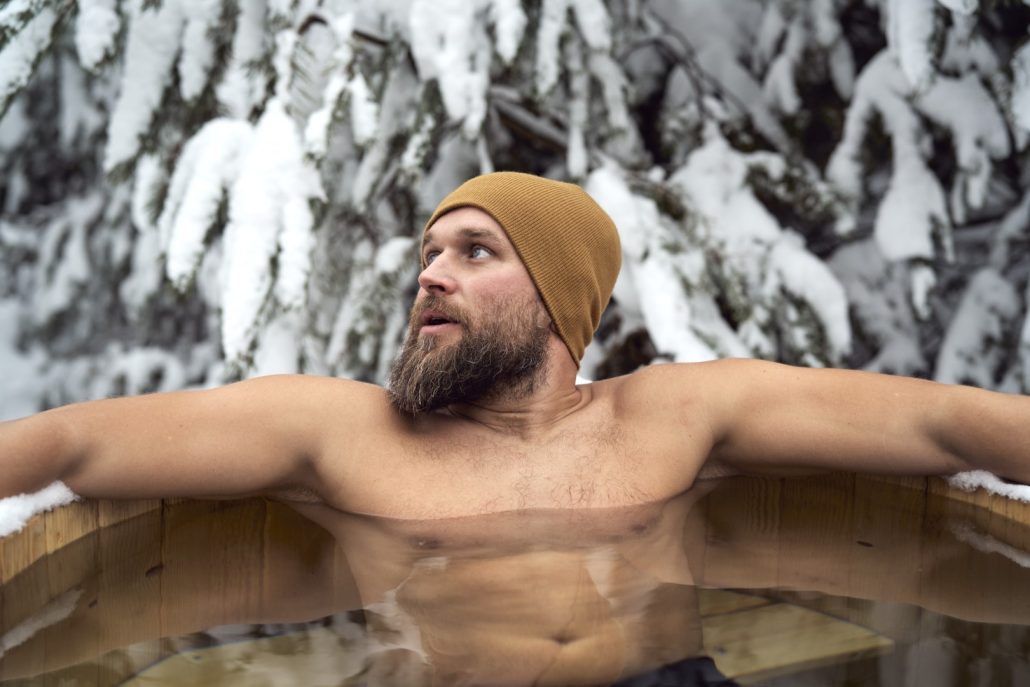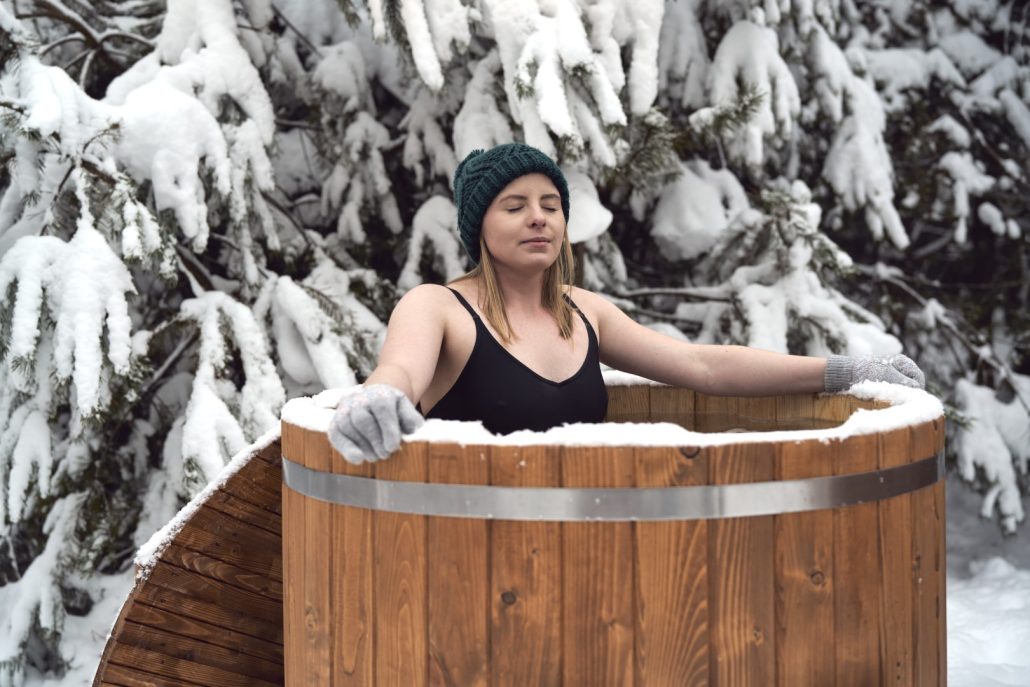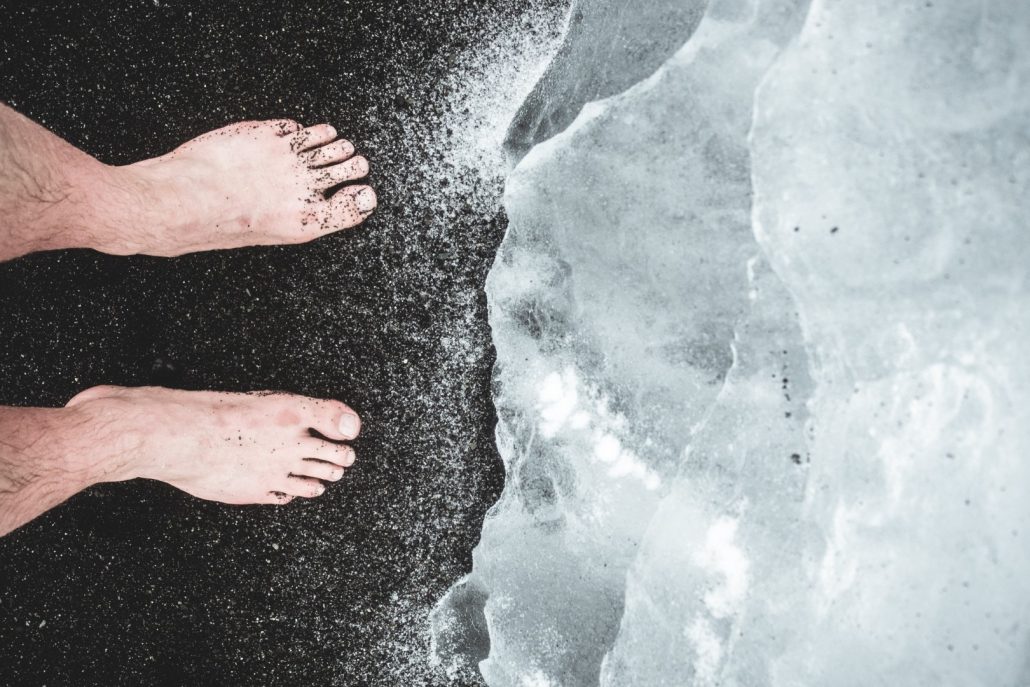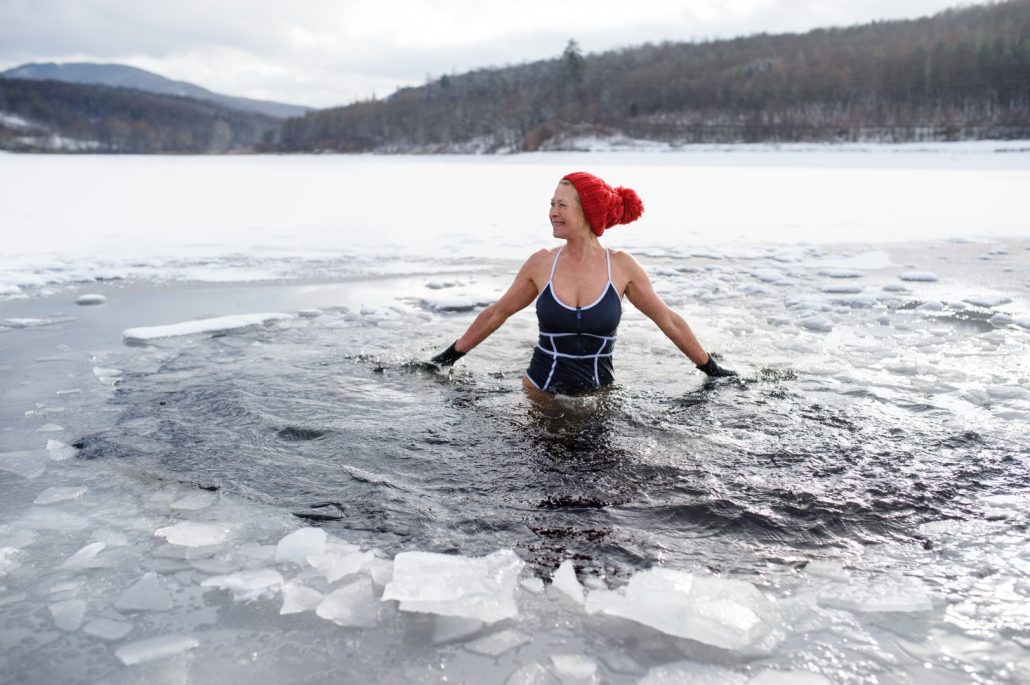
Growing popularity:
In recent years, the growing popularity of cold plunges has become a testament to the increasing interest in holistic wellness practices. Once considered an extreme pursuit, cold plunges, or ice baths, have transitioned from niche fitness communities to mainstream health and wellness routines. Advocates of cold exposure emphasize its numerous benefits, ranging from improved circulation and reduced muscle soreness to enhanced mental clarity and resilience to stress. Athletes, celebrities, and health enthusiasts alike have embraced the invigorating experience of immersing oneself in cold water, whether through specialized cryotherapy chambers, natural bodies of cold water, or even at-home ice baths. The trend has been further fueled by scientific studies highlighting the potential anti-inflammatory effects and positive impacts on the immune system. As individuals seek holistic approaches to well-being, the growing popularity of cold plunges reflects a collective acknowledgment of the transformative power of embracing discomfort for the sake of enhanced physical and mental resilience.

Benefits:
Cold plunges offer a range of potential health benefits, and while individual responses may vary, many practitioners and some studies suggest the following advantages:
- Reduced Muscle Soreness and Inflammation: Cold exposure is believed to help decrease muscle soreness and inflammation, making it a popular recovery tool among athletes. The cold water may constrict blood vessels and reduce blood flow to the muscles, subsequently diminishing inflammation and swelling.
- Enhanced Muscle Recovery: Cold plunges may promote muscle recovery by potentially accelerating the removal of metabolic waste products from muscle tissues. This can contribute to faster recovery times between intense physical activities.
- Improved Circulation: Exposure to cold water can stimulate vasoconstriction (narrowing of blood vessels) followed by vasodilation (widening of blood vessels), which may enhance overall blood circulation. Improved circulation can benefit cardiovascular health and oxygen delivery to tissues.
- Boosted Immune System: Some research suggests that regular cold exposure may stimulate the production of certain immune cells and increase the body's resistance to illness. Cold plunges could potentially contribute to a more robust immune system.
- Increased Energy and Alertness: Cold water immersion has been associated with increased alertness and improved mood. The shock of cold water may trigger the release of neurotransmitters and hormones, such as adrenaline, leading to heightened mental clarity and focus.
- Caloric Expenditure: The body expends energy to maintain its core temperature in cold environments. While not a replacement for traditional exercise, exposure to cold water can contribute to overall caloric expenditure.
- Improved Sleep Quality: Some individuals report better sleep quality after engaging in cold exposure. The cooling effect on the body may aid in lowering core body temperature, promoting a more restful sleep.
- Stress Reduction: Cold exposure may activate the body's stress response, leading to an increased tolerance for stress over time. This adaptation may contribute to improved resilience to stressors in daily life.
It's important to note that while cold plunges can offer these potential benefits, they may not be suitable for everyone, particularly individuals with certain medical conditions. As with any wellness practice, it's advisable to consult with a healthcare professional before incorporating cold exposure into one's routine, especially if there are pre-existing health concerns.

Are Ice baths Dangerous?
While ice baths can offer various health benefits, it's essential to approach them with caution, as there are potential risks associated with cold exposure. Here are some considerations to keep in mind, and it's advisable to consult with a healthcare professional before incorporating ice baths into your routine:
- Hypothermia: Prolonged exposure to extremely cold water can lead to hypothermia, a condition where the body loses heat faster than it can produce it. Symptoms include shivering, confusion, and fatigue. It's crucial to monitor the duration of the ice bath to avoid excessive cooling of the body.
- Frostbite: Exposure to cold water can increase the risk of frostbite, especially in extremities like fingers and toes. It's important to protect these areas and ensure they are not exposed for extended periods.
- Cardiovascular Strain: Cold immersion can lead to vasoconstriction (narrowing of blood vessels) and an increase in blood pressure. Individuals with cardiovascular conditions should exercise caution, as the sudden stress on the cardiovascular system may pose risks.
- Respiratory Issues: Immersing the body in cold water can induce a gasp reflex and increase respiratory rate. Individuals with respiratory conditions or those prone to respiratory issues should be cautious to avoid breathing difficulties.
- Nerve Damage: Prolonged exposure to cold water can potentially lead to nerve damage. It's important to avoid numbness and tingling sensations, which could indicate nerve-related issues.
- Individual Variability: People respond differently to cold exposure based on factors such as age, overall health, and individual tolerance. What may be suitable for one person might not be appropriate for another.
- Contraindications: Ice baths may not be suitable for everyone, especially individuals with certain medical conditions. Those with conditions such as Raynaud's disease, uncontrolled hypertension, or cardiovascular diseases should consult with a healthcare professional before attempting cold exposure.
- Post-immersion Collapse: There have been cases of post-immersion collapse, where individuals experience a drop in blood pressure and fainting after exiting a cold bath. To minimize this risk, it's important to exit the ice bath slowly and allow the body to adjust.
To mitigate risks, it's advisable to start with shorter durations and gradually increase exposure over time to see how your body responds. Always listen to your body and exit the ice bath if you experience any adverse reactions. If you have pre-existing health conditions or concerns, consult with a healthcare professional before incorporating ice baths into your wellness routine. If you experience any adverse reactions, discontinue the use of ice baths and seek medical guidance.

Build and Design:
The size of an at-home ice bath depends on several factors, including personal preference, available space, and the intended use. Here are some considerations when determining the size of an at-home ice bath:
- Individual vs. Multiple Users: Individual Use: For personal use, a smaller tub or container may be sufficient. This can be an inflatable ice bath, a large tub, or even a cold plunge tub designed for single users. Multiple Users: If more than one person will be using the ice bath simultaneously, a larger tub or a specially designed multiple-user cold plunge may be necessary.
- Available Space: Consider the space you have available at home. Some people may have ample room for a larger tub or even a dedicated cold plunge space, while others may need to opt for a more compact solution that can be easily stored. For outdoor use, seek the advice from a landscape designer.
- Budget and Accessibility: Larger tubs or dedicated cold plunge setups may come with a higher price tag. Consider your budget and how much you are willing to invest in an at-home ice bath solution.
- Temperature Control: Some at-home ice baths come with built-in temperature control features, allowing users to regulate the water temperature more precisely. Depending on the technology used, the size of the tub may vary.
- Portability: If portability is a priority, inflatable ice baths or portable tubs that can be easily set up and taken down may be more suitable. These are often available in different sizes to accommodate various needs.
- Usage Frequency: Consider how often you plan to use the ice bath. If it's a daily or frequent practice, you may want a more permanent or easily accessible solution. For occasional use, a portable option might be preferable.
- Height and Depth: Ensure that the chosen ice bath provides sufficient depth for effective immersion. The depth should allow for the water to cover the body adequately while sitting or standing.
Ultimately, the best size for an at-home ice bath is a personal decision based on your specific requirements and constraints. Whether you choose a small, portable tub or invest in a larger, more permanent solution, the key is to create an environment that allows for comfortable and effective cold exposure while considering factors like temperature control, space, and budget.

Ice baths or cold plunge tubs can be made from various materials, and the choice often depends on factors such as durability, insulation properties, cost, and personal preference. Here are some common materials used for making ice baths:
- Plastic: Polyethylene: Many portable and inflatable ice baths are made from polyethylene, a type of plastic known for its durability and resistance to temperature extremes. These tubs are often lightweight and easy to transport.
- Rubber: Rubberized Materials: Some ice baths may have a rubberized or thermoplastic lining, providing flexibility and durability. Rubberized tubs can offer insulation to maintain colder temperatures for a longer period.
- Fiberglass: Fiberglass is a lightweight and sturdy material used for constructing more permanent cold plunge tubs. It's durable, resistant to corrosion, and can be molded into various shapes and sizes.
- Acrylic: Acrylic: High-quality ice baths may be made from acrylic, which is a type of plastic that is durable, easy to clean, and provides a smooth surface. Acrylic tubs are often used for more upscale or aesthetically pleasing designs.
- Stainless Steel: Stainless Steel: For a sleek and durable option, some ice baths are constructed from stainless steel. Stainless steel is resistant to corrosion and can withstand frequent use, making it a popular choice for professional and commercial settings.
- Wood: Wood: Traditional wooden tubs may be used for cold plunges. These tubs are often lined with waterproof materials to prevent leakage. Wooden tubs can provide a natural and aesthetically pleasing look.
- Polypropylene: Polypropylene: Similar to polyethylene, polypropylene is a type of plastic used in the construction of portable and durable ice baths. It is known for its resistance to chemicals and temperature extremes.
- Vinyl: Vinyl: Some inflatable ice baths feature a vinyl construction. Vinyl is a flexible and waterproof material that can be suitable for temporary or portable setups.
The choice of material depends on factors such as intended use, budget, and personal preferences. Portable ice baths designed for home use may be made from different materials than more permanent installations found in professional sports facilities or rehabilitation centers. Additionally, the insulation properties of the material can impact the ability of the ice bath to maintain cold temperatures during use.
Why should you own an ice bath?
Owning an ice bath can be a transformative addition to one's wellness routine, offering a myriad of physical and mental benefits. The invigorating sensation of immersing oneself in cold water not only provides a refreshing escape but also serves as a powerful tool for recovery. The controlled exposure to cold temperatures is known to reduce muscle soreness, alleviate inflammation, and promote efficient muscle recovery, making it an invaluable asset for athletes and fitness enthusiasts. Beyond its physical advantages, an ice bath can act as a holistic remedy for stress, enhancing mental clarity and fostering a sense of resilience in the face of life's challenges. With the convenience of having an ice bath at home, one gains the flexibility to incorporate this rejuvenating practice into their routine, tailoring the experience to their preferences. Whether seeking a post-workout recovery or a daily ritual for overall well-being, owning an ice bath empowers individuals to harness the therapeutic benefits of cold exposure, creating a sanctuary for physical and mental revitalization within the comfort of their own space.

Click here for your free quote!


